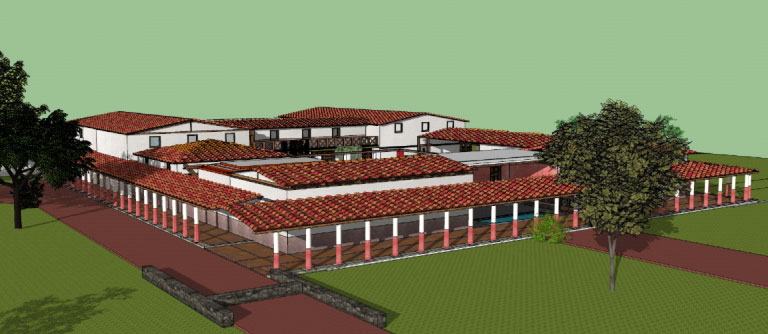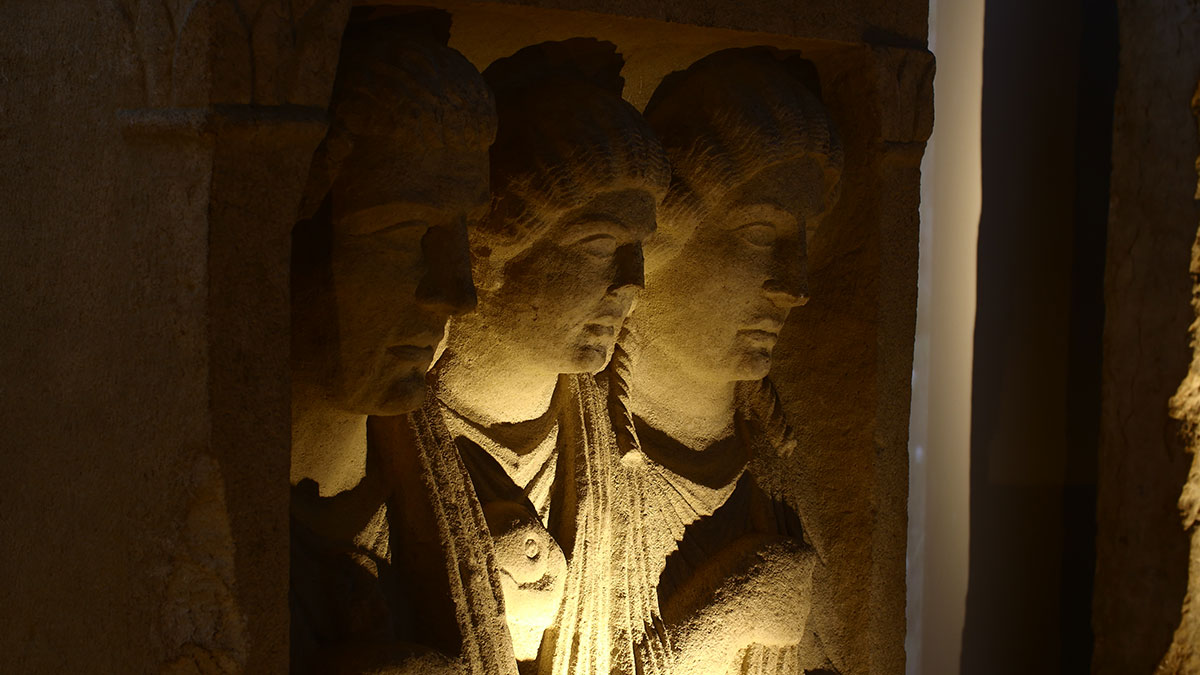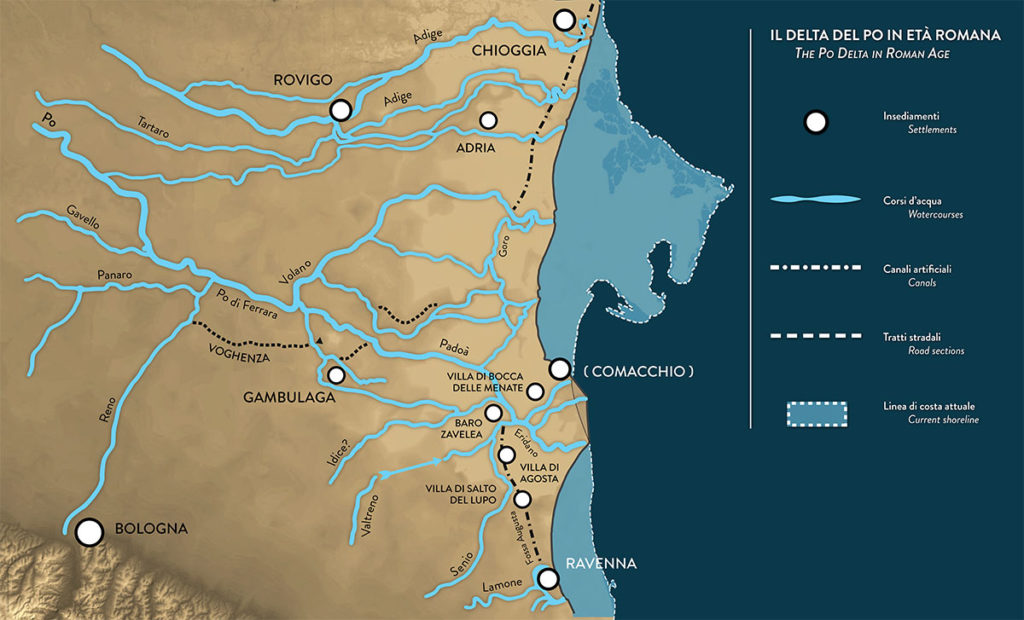Geography of the roman delta
Rome extended its dominance in the Delta, defeating the Gauls and Lingones. The area became a Roman colony in which lands were distributed to army and navy veterans based in Ravenna as well as to ordinary citizens in good economic conditions.
After the decline of the Etruscan city of Spina, no urban center was established in the territory. Instead the existence of villas (farms), vici and pagi, i.e., rural villages, is recorded. One special feature compared to other areas in northern Italy was the presence of large landed estates (saltus) in this area, some of imperial ownership, administered by the emperor’s slaves and freedmen. The center of this stewardship was Voghenza (Vicus Abentia)
“Viatores et velatores salvete et bene valete”: "A greeting of good wishes to those who travel these roads and waterways."
In Aufidia Venusta’s greeting, from a sepulchral inscription from Portomaggiore, the main geographical features of the Delta area and the existence of a major communications system appear in the background. Its main axes were Via Popilia, which allowed reaching Veneto, starting from Rimini (Ariminum); the artificial channels (fossae) running alongside it, which enabled inland navigation and the inland lagoons. The most important of the fossae was the Fossa Augusta, conecting Ravenna to the Po and to the most important cities in the Veneto.
Access to the sea was through the mouth of the Po, for which ancient writers have passed down various names: ostium (port) Caprasiae, Sagis, and Volanae.
The delta's resources
The delta’s environment provided the basis for an economy that, in Roman times, was diversified and well organized for commercial and taxation purposes. Trade expanded not just locally, but also beyond the delta.
Main economic activities were the breeding of animals, especially pigs, hunting and fishing, as well as the production of salt, essential for producing famous garum sauce.
Marsh plants provided raw materials for producing baskets, mats, and other objects, including arrows. In addition,
they were used in roof construction, especially in wooden structures.
Agriculture was mostly directed at crops of cereals and legumes, and also at wine production.
Thanks to the abundance of water, fine clay, and forests of poplar, oak, larch, pine trees to provide the firewood to
feed the furnaces, the delta was also an ideal environment for ceramic and brick production. There were many workshops (figlinae), as evidenced by the large number of tiles and bricks stamped with trademarks of various factories, especially that of Pansiana, owned by Vibius Pansa, active until the middle 1st century AD.
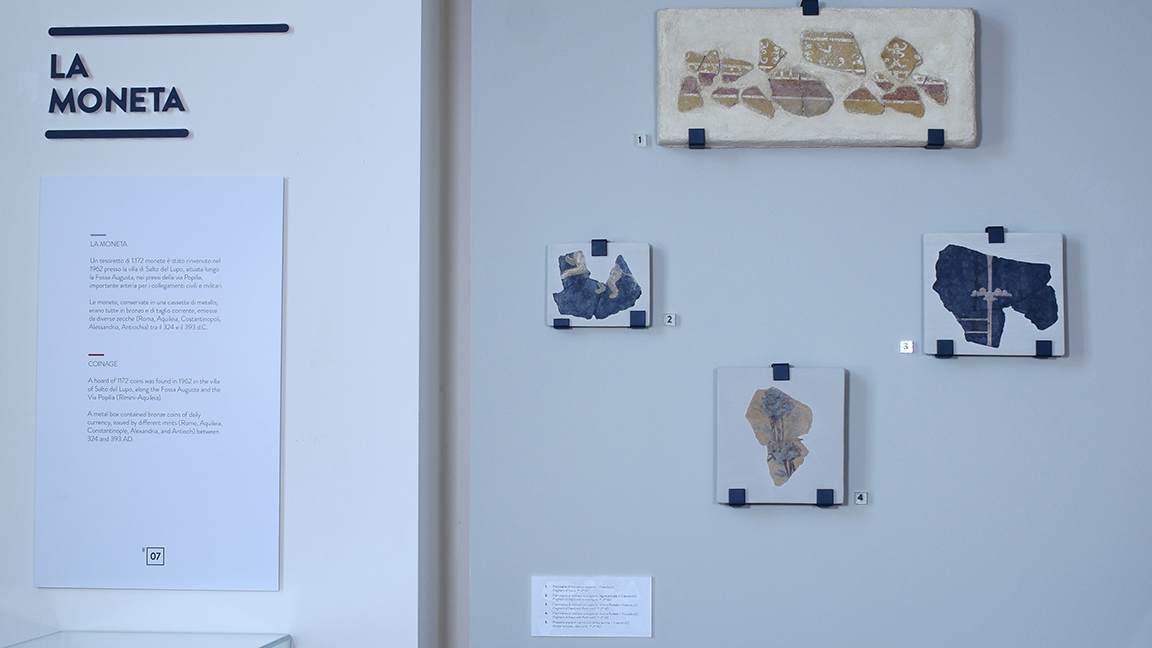
Augustus and the imperial cult
Adopted in his will by Gaius Julius Caesar who was assassinated in the Roman Curia on 15 March 44 B.C. At just 19 years of age, Octavius wants to seize supreme power in Rome. After defeating his final rivals, Mark Antony and Cleopatra, in the Greek waters of Actium in 31 B.C., he is the undisputed master of the Republic and is called Augustus. As heir of a power transmitted by Caesar, he becomes pater, source of all power, lord of triumphs, and the man who realizes the fates of Rome. In a few years, the Republic becomes an empire and power is transmitted by dynastic succession.
All forms of art – from temple architecture to the statues placed in theaters and honorary arches, from poems of love to epic poems, and each expression of essentially fine craftsmanship, from gems to ceramic tableware up to the coins used by everyone daily – refer to Augustus and his dynasty, and the new order of things that he gave to the world. Romans worshiped Augustus and the members of his dynasty as if they were gods, never forgetting that, while living, they were merely men. His last family member was Nero, who committed suicide during a popular uprising.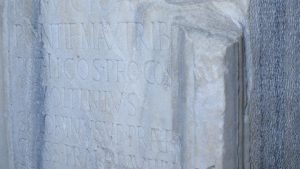
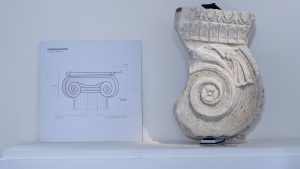
The cult - The Po / Eridanus
The Po River, celebrated with the name of Eridanus and revered along its entire course to be assured of its favours. Its water irrigates fertile fields and pleasant forests, but also brings ruin because
Madly he bears them down, that lord of floods,
Eridanus, till through all the plain are swept
Beasts and their stalls together. (Virgil, Georgics, I, 481-83).This cult is evidenced by the terracotta antefixes (decorations running along the eaves of the roof) found in the Agosta villa excavations. It appears to render the simultaneously human and bull-like image of the river given by Virgil:
'Twixt either gilded horn, Eridanus,
Than whom none other through the laughing plains
More furious pours into the purple sea. (Virgil, Georgics, IV, 371-73).
A small altar and a votive plate confirm the worship of the Junos, Iunones matronae, goddesses of abundance, especially of the fruits of the earth, and Silvanus, god of the woods and the countryside; protector of shepherds, flocks, and property; and god of the bliss of rural life. A jug from the Villa di Agosta excavations, with a dedication to Fortuna, attests the cult to the goddess of fate and destiny.
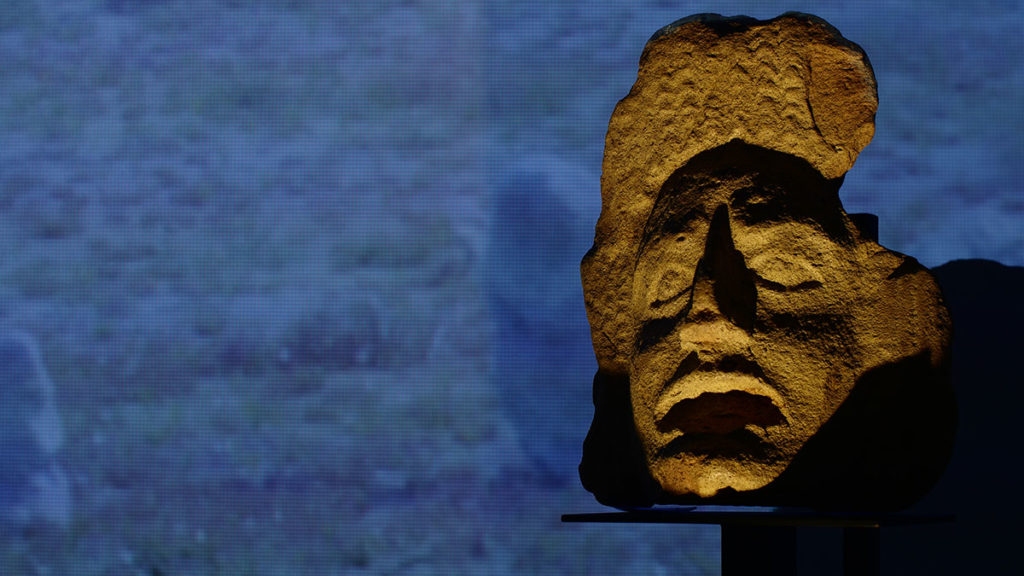
Villas and mail stations
In Roman times, the territory was dotted with villas, stopping place, and production facilities. The villas typically included a residential part (pars urbana), adorned with mosaics and frescoed rooms in addition to a production part (pars rustica/fructuaria), intended for storing foodstuffs, sheltering animals, and transforming agricultural products or resources derived from exploiting a specific river, marsh, or lagoon.
The villa of Bocca delle Menate has richly frescoed and mosaicked rooms for the residence of the dominus, as well as basins and channels in specific areas. Along the Fossa Augusta other production and storage structures have been identified.
Official stopping places, like mansiones, mutationes, and stationes, were widespread along the most important roads, an integral part of the cursus publicus (the state-run courier and transportation service of the Roman Empire). In these places, it was possible not only to find accommodation, refreshment, and fresh mounts, but also to take river transport towards the interior of the plain or continue on towards the Adriatic.